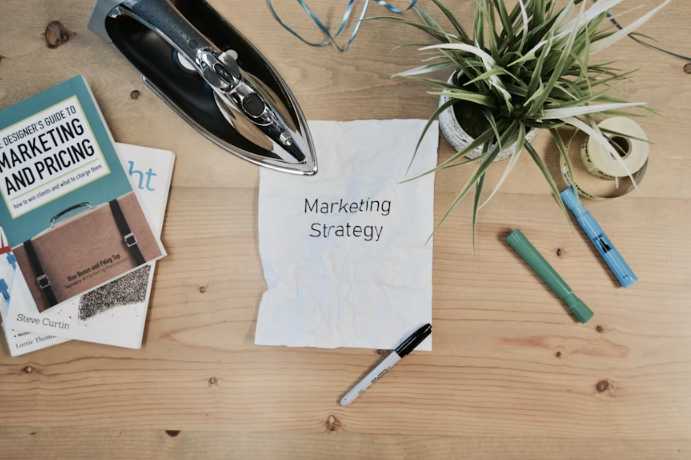User interaction with a website is key to SEO. A simple layout keeps users on your site longer and reduces bounce rates. This is critical to search engine rankings. A responsive design makes the site accessible across all devices. This is important for mobile rankings. Search engines index content more efficiently with the help of HTML. This increases visibility.
Websites are the face of any business. Their design and discoverability are therefore essential. Websites are the public image of any company. Their discoverability and look are thus of prime importance. Website design deals with the look and feel of a website, making it nice to look at and easy to use. SEO (Search engine optimization) is all about organic traffic and elevating a website to the top of search engine rankings.
Though they deal with several facets of a website’s success, SEO and web design complement one another. Good websites increase SEO ratings as well as enhance user experience. Such a two-way connection implies that the layout of a website can greatly affect its SEO friendliness.
Building a successful website requires an understanding of how web design affects SEO.
This article delves into the role of web design in SEO.
SEO and Web Design
Your website design is more than pretty pictures. It’s an important factor that affects Search Engine Optimization (SEO), and consequently, traffic to and visibility of your site.
We have a well-designed website that is visually pleasing, structured, and optimized to make search engines find it easy to comprehend and rank. Good website design includes fast loading and an intuitive user interface. Importantly for SEO, they are also mobile-friendly.
These design elements will help users, lower bounce rates, and finally rank better in search results.
Look at how web design influences SEO.
1. User Experience
Search engine rankings are heavily influenced by the overall user experience. Google and other search engines have been focusing more on UX factors as ranking factors to give users the best results.
UX metrics that affect SEO are page load speed, mobile friendliness, and navigation ease. All of these add up to how usable and engaging a site is to its users.
Websites that load fast and are easy to navigate on mobile devices keep visitors longer, which reduces bounce rates and increases conversion rates. A logical design, clear call-to-action buttons, and an accessible layout all improve user satisfaction. Search engines also monitor this and reward it.
By improving UX, websites not only meet user expectations but also tell search engines the website is a valuable and credible source of information. This boosts its organic search ranking.
2. User Interface
User interfaces (UI) are the primary point of interaction between a computer and a human in any device or software. An excellent UI makes it simple and fun to interact between a user and a product.
A clean and intuitive design is necessary to provide a smooth user experience. UI design centers around the prediction of what actions users might need to perform and an easy-to-use, easy-to-learn, easy-to-access interface.
The interface is designed to be visually appealing. It uses typography, colors, buttons, animations, and imagery.
A good UI design can improve the performance of your website by making it easy to use.
3. Responsive Design
Responsive Design assures that across several devices—from desktops to tablets—the layout of a website and its content will show and work as intended.
Flexible layouts, CSS media queries, and photographs let this design approach adapt to the gadget of user. It is important as it is a major element in the usability of a website. For some devices, a site that isn’t responsive might seem shattered, be difficult to navigate, or display content inappropriately. Frustration resulting from this can cause visitors to leave the website.
Because it offers a consistent experience across several screen sizes and angles, responsive design can improve user happiness. Higher conversion and retention rates may follow from this.
4. Website Speed and Performance
The user experience and the search engine rankings are also greatly determined by the performance and speed of a website.
Fast-loading websites retain users and minimize bounce rates. They also drive visitors to linger longer and browse additional web pages. Performance optimization incorporates methods such as image compression, browser caching, minimizing HTTP calls, and code optimization using JavaScript and CSS. These practices enhance the rate at which a user can interact and use a web page.
Better website performance translates into increased user satisfaction, improved conversion rates, and better search engine rankings. It is thus an essential aspect of web design.
5. Site Architecture
Driven by business goals and user needs, site architecture is the way a website’s structure is designed and arranged.
A well-designed website layout helps consumers to more quickly and more efficiently find information. Additionally very important for SEO is a semantic site structure. Enhancing search visibility streamlines the process by which search engines analyze content hierarchy and its relative value.
Hierarchy in menus, consistent navigation, and deliberate placement of links inside material to connect with it are most crucial. A simple-to-understand site structure will help search engines and visitors alike to quickly navigate your website, therefore boosting SEO and user experience.
6. Structured Data
Structured Data is a standard format used in the industry that conveys information about a web page and classifies the content of a webpage. Web designers must make sure that the design aspects of their website are structured to accommodate structured information.
This involves coding web pages such that spaces where structured data can be implemented–breadcrumbs, events, people, or reviews–are well defined and correctly structured. Structured data is more crawlable and understandable for search engines, which can then show content as rich snippets. Visibility of search results can be enhanced through this.
Structured data is used to enhance the SEO of a website and the way it appears on search results pages. This might help improve click-through rates.
Keep in mind that certain structured data helps Google know your credentials, including education and certifications.
7. Visual Content
Images, animation, and videos are all visual material that engages and retains visitors to a website. The user experience is enhanced by text breaking and the introduction of ideas, as well as a more interactive and interesting user interface.
Creating a website calls for optimization of visual content for aesthetics and performance. One should utilize the appropriate file types, compress files to load rapidly, and ensure visual content is responsive on all devices.
The addition of text alternatives to visual content, including captions and alt text, can also assist with SEO. Disabled consumers find material more accessible. Properly executed visual material can help a site be SEO-friendly, interesting, and more appealing.
8. Accessibility
Accessible web design helps to ensure that every person may access and utilize websites regardless of their abilities or impairments. It involves designing interfaces that are screen-reader navigable and providing sufficient contrast for visual material.
Making a site accessible is not only a moral obligation but also has SEO implications. Search engines give priority to sites that provide a positive user experience for all visitors, including those who have disabilities. Creating a site accessible could expand its audience, help create a superior brand image, and improve search engine results.
Some of the most important accessibility features:
- Alt text for Images: Allows a description for images to assist those utilizing screen readers.
- Keyboard navigation: All the functionality can be navigated through a keyboard and not just a mouse.
- Text-to-Speech Compatibility enables text to be spoken out loud by screen readers.
- Color and Contrast Options: The text and background will be highly contrasted for the visually impaired.
- Text Resizing: The text size can be resized by the users without the layout being broken.
- Closed captions and transcripts: Offers transcripts and captions of audio and video items for hearing-impaired users.
- Accessible forms: Contains label tags and focus indicators, making it more accessible.
- Consistent navigation: Maintains a consistent layout, making it simpler to use.
- Error Detection and Suggestions: Detects errors and provides suggestions.
- Skip Navigation: Gives links at the top of the page allowing users to directly go to the main content.
To develop a setting that is accessible to everyone, accessibility should be included in the design process.
Web Design and SEO Work in Concert to Generate Results
Collaboration among web designers, SEO professionals, and other technical experts is advisable. It allows for harmony between the appearance and technicalities of a website.
By including SEO in the design from the beginning, you can prevent any issues that might happen by retrofitting SEO to an already existing design.
It is simpler to rectify technical problems like site speed optimization, mobile responsiveness, and semantic HTML structure during the design process rather than after the website has been constructed.
Think About SEO While Designing
Improved Experience
SEO is not really about links and keywords; it’s about designing a user-friendly site. Adding SEO into the design phase will help you to create a layout meant for interaction, make the content of your website accessible, and make its navigation simple to use and intuitive. All these matter in keeping visitors around.
Enhanced Structure
Incorporating SEO in web design serves to generate a distinct and coherent structure. This structure is necessary for search engines in order to index and comprehend the site’s contents effectively.
Time and Cost Savings
By incorporating SEO into the process of website design, it becomes unnecessary to redesign or maintain an old website. This can save time and money and minimize the likelihood of compromising existing visual or user experience.
Avoiding SEO Traps
Designers who know SEO basics can avoid pitfalls, including overuse of JavaScript, setting text in images that are not crawlable, or designing layouts for content that could dilute keyword impact.
Online success depends on the integration of SEO with web design. It optimizes the capacity of the site to rank highly in search engines, improves its user experience and usefulness, and simplifies the creation process.
You can ensure that your website is well-designed and optimized for search engine success by fostering a collaborative atmosphere between designers and SEO experts.
One of the advantages of having an agency that provides full-service digital advertising is its web design and SEO departments, which can collaborate well with each other.
Professional Web Design & SEO Services
Are you prepared for your website to take the next level of achievement? Join forces with GenTech Marketing to utilize our SEO and web design skills and develop a website that is great to look at and ranks well in search results.
Our integrated agency offers a range of services to inspire results and foster client growth. Our specialists will help you create a customized plan that boosts website traffic and awareness.
Call us right away to change your internet presence and make it a powerful weapon for your company.
Contact Us Today!
Optimal search engine visibility and ease of use require collaboration between SEO experts and web developers. The collaboration will see the site being both pretty and operational and optimized from the start for search engines.
Web design and SEO are continuing procedures that will have to change with shifting consumer behavior, technical breakthroughs, and search engine algorithm changes, rather than something one accomplishes once. To maintain a website as current and competitive as feasible will call for regular updates, ongoing optimization, and possibly redesigns.
Designers, SEO specialists, and coders collaborating create a website that is strong and keeps consumers engaged over the long run. This will result in traffic and engagement.






